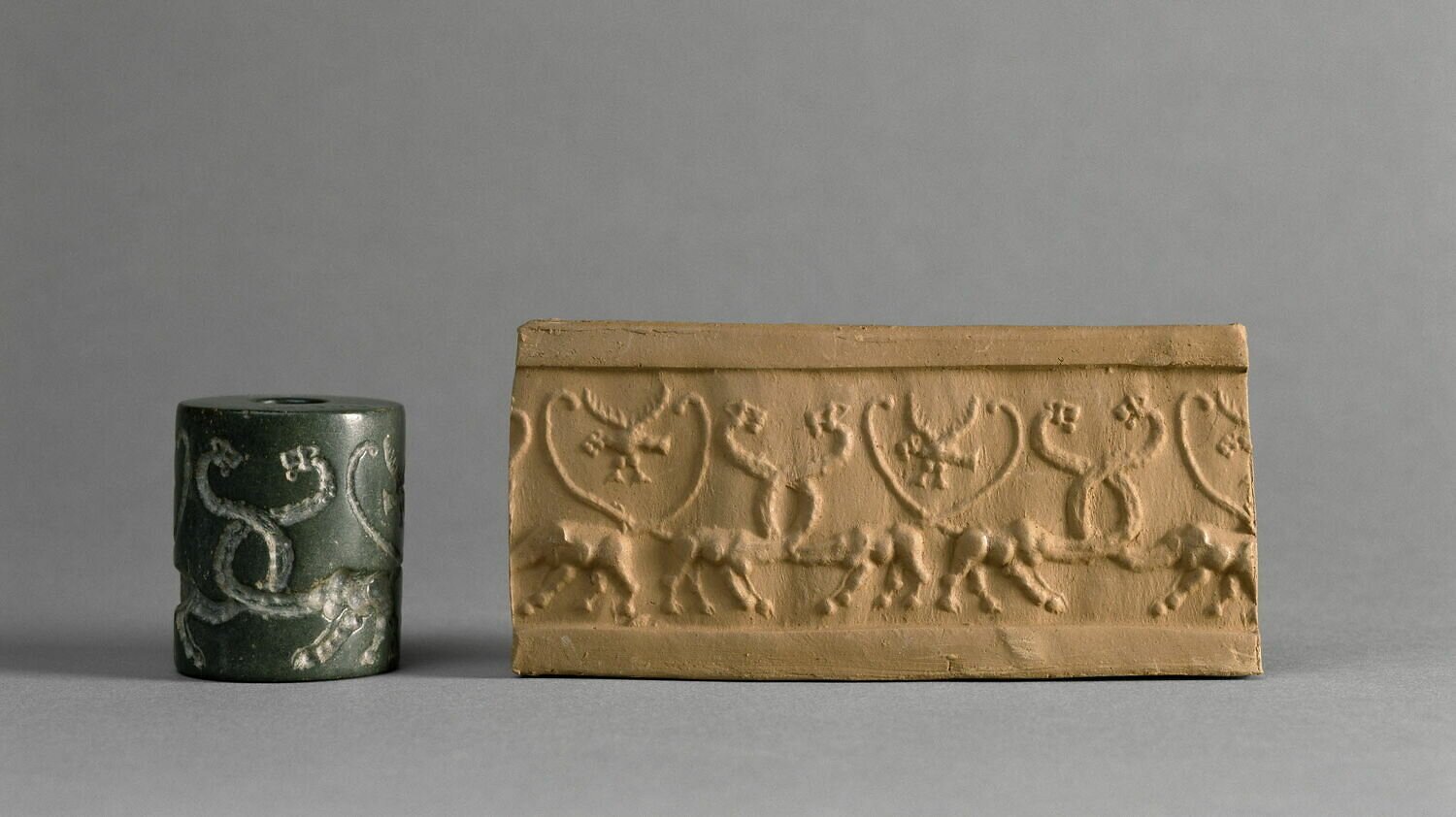
Academics may have finally pinpointed the predecessor to humanity’s first written language. Three researchers from the University of Bologna contributed to this longstanding debate in the latest issue of Antiquity, where they revive the argument that ancient seals used to brand products shaped the formation of cuneiform.
“The invention of writing marks the transition between prehistory and history,” lead researcher Silvia Ferrara remarked in a statement. “The findings of this study bridge this divide.”
Sumerians weren’t the only prehistoric people to conceive of writing, but as history has it, they were first. Proto-cuneiform arose between 3,350 and 3,000 C.E. in the city of Uruk, in present-day Iraq. Proto-cuneiform consisted of pictographs that evolved into abstract symbols over cuneiform’s 3,000-year existence. The Akkadians, Babylonians, and Assyrians all used it. There are about 800 proto-cuneiform characters known today. Much like its successor, few of proto-cuneiform’s characters have been translated.
Photograph of proto-cuneiform tablet showing signs discussed in the article. Image: Cuneiform Digital Library Initiative, courtesy of the University of Bologna.
Long before proto-cuneiform arrived, though, Mesopotamian merchants had been branding the clay vessels that carried their goods down the Tigris and Euphrates rivers with seals describing their contents, quantities, destinations, and more. “Seals represent cultural ideals as much as realities,” the study noted. The seals were embossed into cylinders which were rolled over the clay vessels while they were still wet. Some seals were utilized throughout the wider region.
Such seals have already intrigued researchers. University of Pennsylvania archaeologist Holly Pittman, who is cited in the new study, posited the link 30 years ago. She told Live Science that although her efforts were dismissed back then, she is satisfied to see others reaching the same conclusion.
The new study focused on seals used throughout Southwest Asia between 4,400 and 3,400 B.C.E.—the full millennium before the advent of writing. As Kelley explained, “The crucial link that we’re presenting in the paper is a first concrete set of a few signs where we can explicitly say: these are there before writing and they’re used in similar ways and they have some sort of semantic association that is carried over into the invention of writing.” These seals continued to be used alongside other technologies like tokens and clay balls, other potential predecessors to proto-cuneiform, well after the script’s arrival.
Diagrams of proto-cuneiform signs and their precursors from pre-literate seals. Image: Cuneiform Digital Library Initiative, courtesy of the University of Bologna.
A pole and net sign known as ZATU639, for instance, repeatedly appeared alongside cattle (and in cattle-adjacent contexts) across pre-literate tablets. On seals, people and animals move towards a similar shape, leading scholars to believe this symbol was used to track the transportation of goods.
The study also noticed that imagery of vessels and fringed cloth being carried in nets often appeared together across relics. “Their presence on numerical tablets, in particular—a document type marking the transition between pre-literate accounting and proto-literate writing—argues for a trajectory of symbolic representation from seals to inscribed signs,” the study said. The team thinks ZATU190 symbolizes a vessel, ZATU662 fringed cloth, and ZATU688 a type of garment. Clothing was a critical early Mesopotamian export.
This paper already has proponents and detractors. But, if it can hold its own, it’s yet another testament to the way trade has inexorably shaped society.